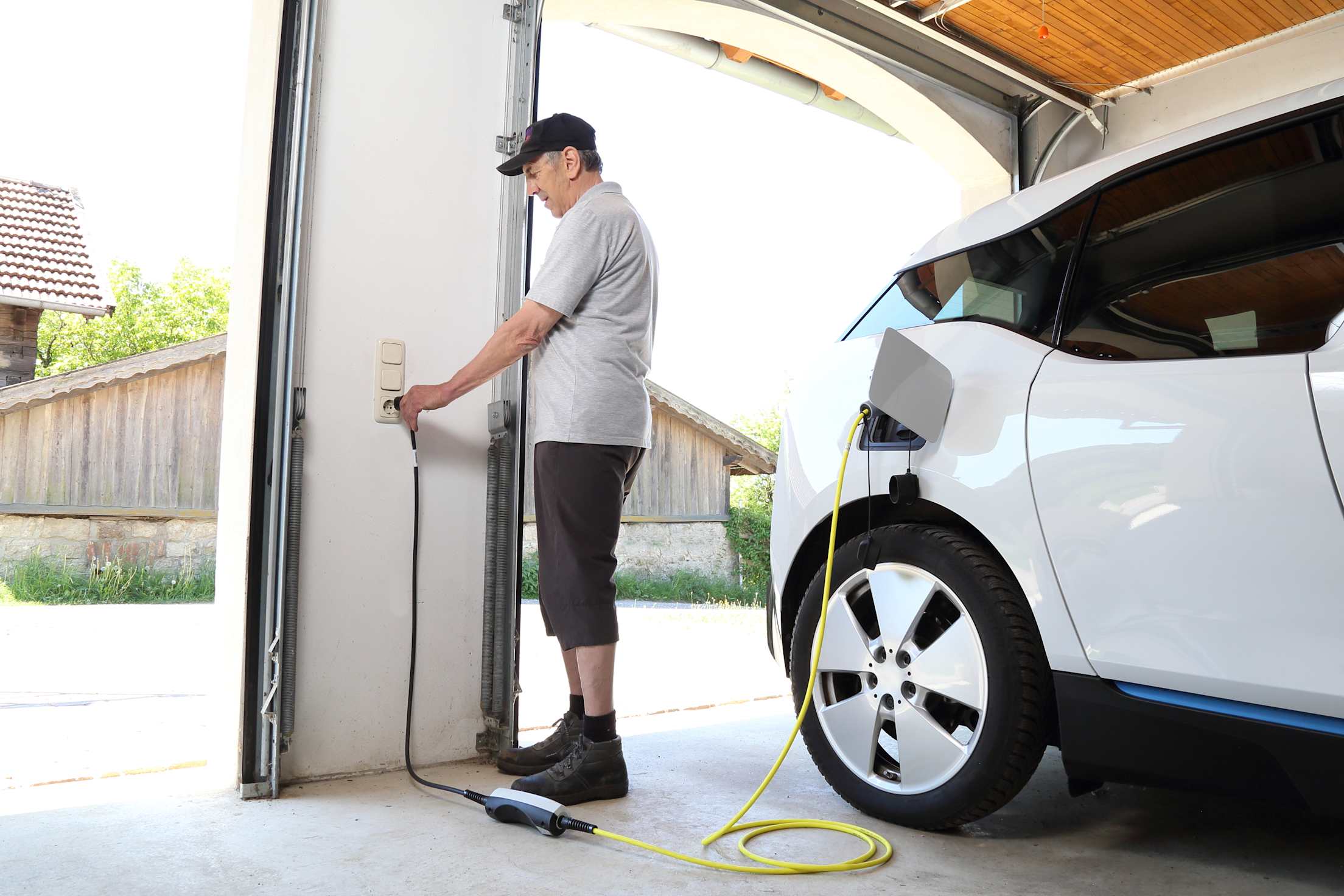
What to Know About Charging Electric Vehicles at Home
Installation. Cost. Charging levels. There's a lot to understand about EV home charging stations.

There’s little arguing that electric vehicles are the cars of the future. In fact, between automakers pledging to transition to all zero-emission lineups and states banning gas-powered cars, it’s looking more and more like EVs will soon be a car owner's only option. With that in mind, it’s becoming imperative to better understand how to operate these green vehicles—particularly, how to charge them. Since most charging is done at home, this means understanding how EV home charging stations work.
Although EV home charging can be as simple as plugging your car’s battery in an outlet, there are a lot of factors to take into consideration, including charging efficiency, installation, and cost.
EV Home Charging
Most electric vehicle owners charge their cars at home. In fact, according to the U.S. Department of Energy, more than 80 percent of EV charging is done at an owner’s residence. This is obviously the most convenient option—you can charge the car when you’re sleeping and it’s ready to go in the morning—and it’s also the cheapest. Single-family homes generally have low and stable electricity rates.
Charging your EV at home certainly isn’t free, but it costs substantially less than paying for gas and is usually cheaper than using a public charging station. The Department of Energy estimates that fully charging an all-electric vehicle with a 100-mile range would cost the equivalent of running air conditioning for six hours. Because they have smaller batteries, plug-in hybrid EVs would cost even less.
When you compare this to the cost of gasoline, you can see how the savings pile up. Over the last year, average national gas prices have fluctuated between $2.88 and $4.25, meaning the average driver spend more than $2,300 a year on fuel.

Electric vehicles can be charged by simply plugging into a regular wall outlet or a higher voltage outlet.
Charging Levels
There are two options of charging available to you when using your home’s electricity: level 1 and level 2.
If you plug your vehicle into a standard 120-volt wall outlet, you’re using level 1. This is the simplest charging method, but also the least efficient. Level 1 charging takes time, adding roughly 3 to 5 miles of range per hour. If you don’t usually drive long distances, this may be more than enough.
Some drivers, however, need to get more miles out of their vehicles on a regular basis. That’s why many EV owners opt to upgrade to level 2, which delivers 240 volts and, depending on the amperage or electrical current, can add anywhere from 10 to 60 miles of range in one hour. The typical level 2 charging station can fully charge an EV overnight.
EV Charging Station Installation Cost
Level 2 charging isn’t a matter of flipping a switch or purchasing a different power cord. Instead, special charging equipment must be installed in your house. These units, known electric vehicle supply equipment, can range in price from a few hundred dollars for an EV charging cable that plugs into a 240-volt, 20-amp outlet to a couple thousand for a hard-wired, internet-connected smart charger.
You will need to get an electrician to install the charging station or power to supply the station, which will also cost money. A typical installation could cost as little as $300, but there are several factors that could bump up the price, including if your house needs an electrical upgrade or a remodel to allow the unit to connect to the house’s electrical supply. Some states offer charging station rebates and incentives to help defer cost.

Many home chargers can be used outdoors.
Outdoor Home EV Charging
Most owners charge their EVs from the garage, but both level 1 and 2 charging can also be done outside. The only consideration with outdoor level 1 is the length of the power cord. Most EVs come with their own cord, but you may need to invest in a longer one that can reach from your home to the vehicle.
You can follow the same process with outdoor level 2 charging by simply running an extended power from your vehicle to the indoor charging station. However, you can also install the charging station itself outside. If you choose this option, install the unit in a location where the wires can be run safely. You’ll also want to choose your charging station wisely. Some are better suited to deal with outdoor elements than others.